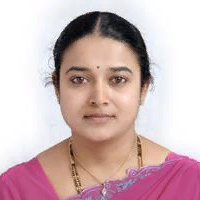[1]Catherine Baker, John Baker and Hassan Nouri, University of West of England, Bristol, “Sag-Tension Calculation Program for Wood Pole Overhead Lines”, IEEE Power Engineering Conference (UPEC), Pages:1-6, DOI: 10.1109/UPEC.2013.6715035
[2]Oluwajobi F. I., Ale O. S. and Ariyanninuola A., Department of Electrical and Electronics Engineering Technology Rufus Giwa Polytechnic Owo, Ondo State, Nigeria, “Effect of Sag on Transmission Line”, Journal of Emerging Trends in Engineering and Applied Sciences (JETEAS) 3 (4): 627-630 Scholarlink Research Institute Journals, 2012(ISSN:21417016).
[3]V.H.Greisser, “ Effects of Ice Loading on Transmission Lines”, Proceedings of the American Institute of Electrical Engineers, 1913, Volume: 32, Issue: 9 Pages:1745-1762, IEEE Journals and Magazines, DOI: 10.1109/PAIEE.1913.6660662
[4]Liu Yongfu, Zhang Liguo and Wang Jun, ”Computation of standard sag of overhead lines for power grid based on mathematical model of iterative technique”, Computer Engineering and Technology (ICCET), 2010 2nd International Conference on, Chengdu, 2010, pp. V1-445-V1-448
[5]A. Polevoy,”Impact of Data Errors on Sag Calculation Accuracy for Overhead Transmission Line,” IEEE Transactions on Power Delivery, vol. 29, no. 5, pp. 2040-2045, Oct. 2014. DOI: 10.1109/TPWRD.2014.2325862
[6]Vehbi C. Gungor, Bin Lu, and Gerhard P. Hancke. “Opportunities and Challenges of Wireless Sensor Networks in Smart Grid”, IEEE Transactions on Industrial Electronics., vol. 57, issue 10, Oct. 2010, DOI: 10.1109/TIE.2009.2039455
[7]U.S. Department of Energy, “The smart grid: An introduction”, Washington, DC, Sep. 2008.
[8]Y. M. Abebe and P. M. Rao, ”Overhead transmission line sag, tension and length calculation using affine arithmetic”, 2015 IEEE Journal of Power, Communication and Information Technology, DOI:10.1109/PCITC.2015.7438162
[9]G. Liu, Y. Li, K. Qi, J. Yu and Y. Cai, "Sag calculation difference caused by temperature difference between the steel core and outer surface of overhead transmission lines," 2016 Australasian Universities Power Engineering Conference (AUPEC), Brisbane, QLD, 2016, pp. 1-5. doi:10.1109/AUPEC.2016.77493
[10]David Balango, Balint Nemeth, University of Technology and Economics Budapest, Hungary, ”Predicting conductor sag of power lines in a new model of dynamic line rating”, 2015 Electrical Insulation Conference (EIC), Seattle, Washington, USA, June 2015
[11]M. T. Bedialauneta, E. Fernandez, I. Albizu, A. J. Mazon and K. J. Sagastabeitia, "Factors that affect the sag-tension model of an overhead conductor," 2013 IEEE Grenoble Conference, Grenoble, 2013, pp. 1-6. doi: 10.1109/PTC.2013.6652426
[12]Kandra Deka, "Modeling of Air Temperature using ANFIS by Wavelet Refined Parameters", International Journal of Intelligent Systems and Applications (IJISA), Vol.8, No.1, pp.25-34, 2016. DOI: 10.5815/ijisa.2016.01.04
[13]Vijay Nehra,"MATLAB/Simulink Based Study of Different Approaches Using Mathematical Model of Differential Equations", International Journal of Intelligent Systems and Applications (IJISA), vol.6, no.5, pp.1-24, 2014. DOI: 10.5815/ijisa.2014.05.01
[14]D. Balangó, I. Pácsonyi and B. Németh, "Overview of a new dynamic line rating system, from modelling to measurement," 2015 5th International Youth Conference on Energy (IYCE), Pisa, 2015, pp. 1-6. doi: 10.1109/IYCE.2015.7180801, IEEE Conference publications
[15]Miao Li, Xiao-Bo Chi, Xin-ChunJia, Jun-LiZhang, School of Mathematical Sciences, Shanxi University, Taiyuan 030006, ”WSN-Based Efficient Monitoring for Overhead Transmission Line in Smart Grid”, Proceedings of the 35th Chinese Control Conference, July 27-28, 2016, Chengdu, China
[16]R. A. Bush, W. Z. Black, T. C. Champion and W. R. Byrd, ”Experimental Verification of a Real-Time Program for the Determination of Temperature and SAG of Overhead Lines”, in IEEE Transactions on Power Apparatus and Systems, vol. PAS-102, no. 7, pp. 2284-2288
[17]Sadov, S.Y., Shivakumar, P.N., Firsov, D. et al., ”Mathematical Model of Ice Melting on Transmission Lines”, J Math Model Algor (2007) 6: 273. doi:10.1007/s10852-006-9043-4
[18]X. Dong, ”Analytic Method to Calculate and Characterize the Sag and Tension of Overhead Transmission Lines”, in IEEE Transactions on Power Delivery, vol. 31, no. 5, pp. 2064-2071, DOI: 10.1109/TPWRD.2015.2510318, Oct. 2016
[19]H. Shaalan, "Transmission line analysis using interval mathematics," 2012 North American Power Symposium (NAPS),Champaign,IL,2012.doi:10.1109/NAPS.2012.6336307
[20]Santosh S. Bujari, Saroja V.Siddamal, “A Survey and Theoretical View on Compressive Sensing and Reconstruction”, I.J.Image, Graphics and Signal Processing, 2016, DOI: 10.5815/ijigsp.2016.04.01

